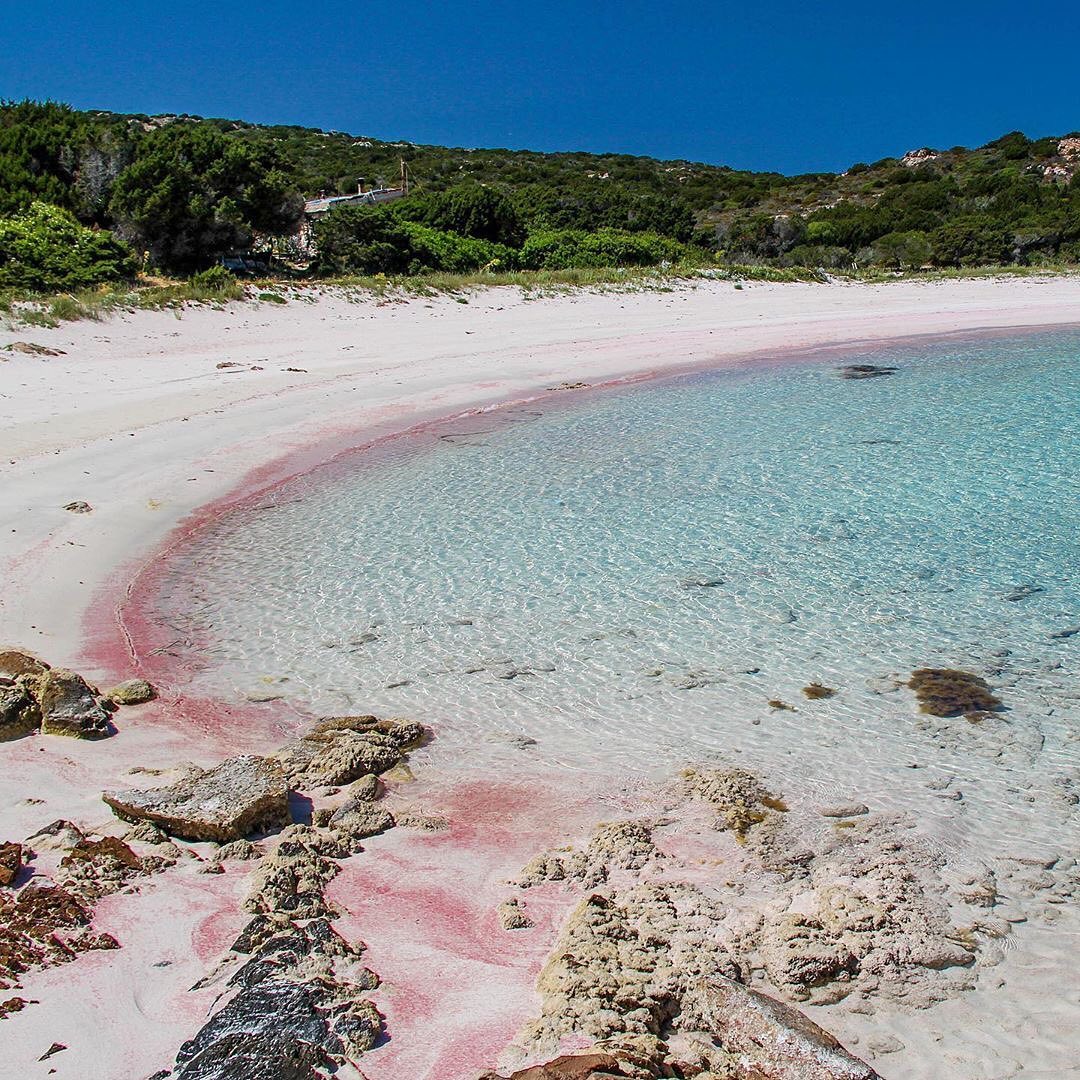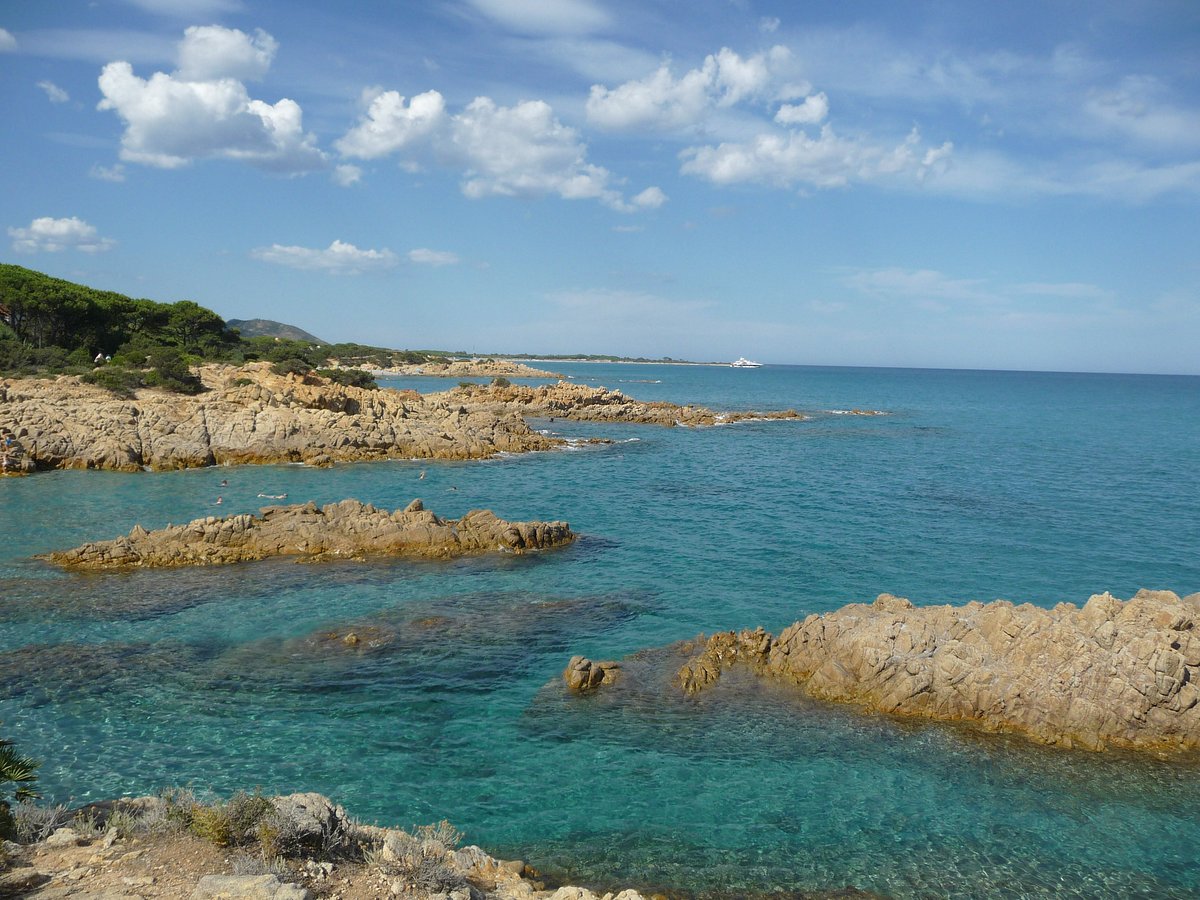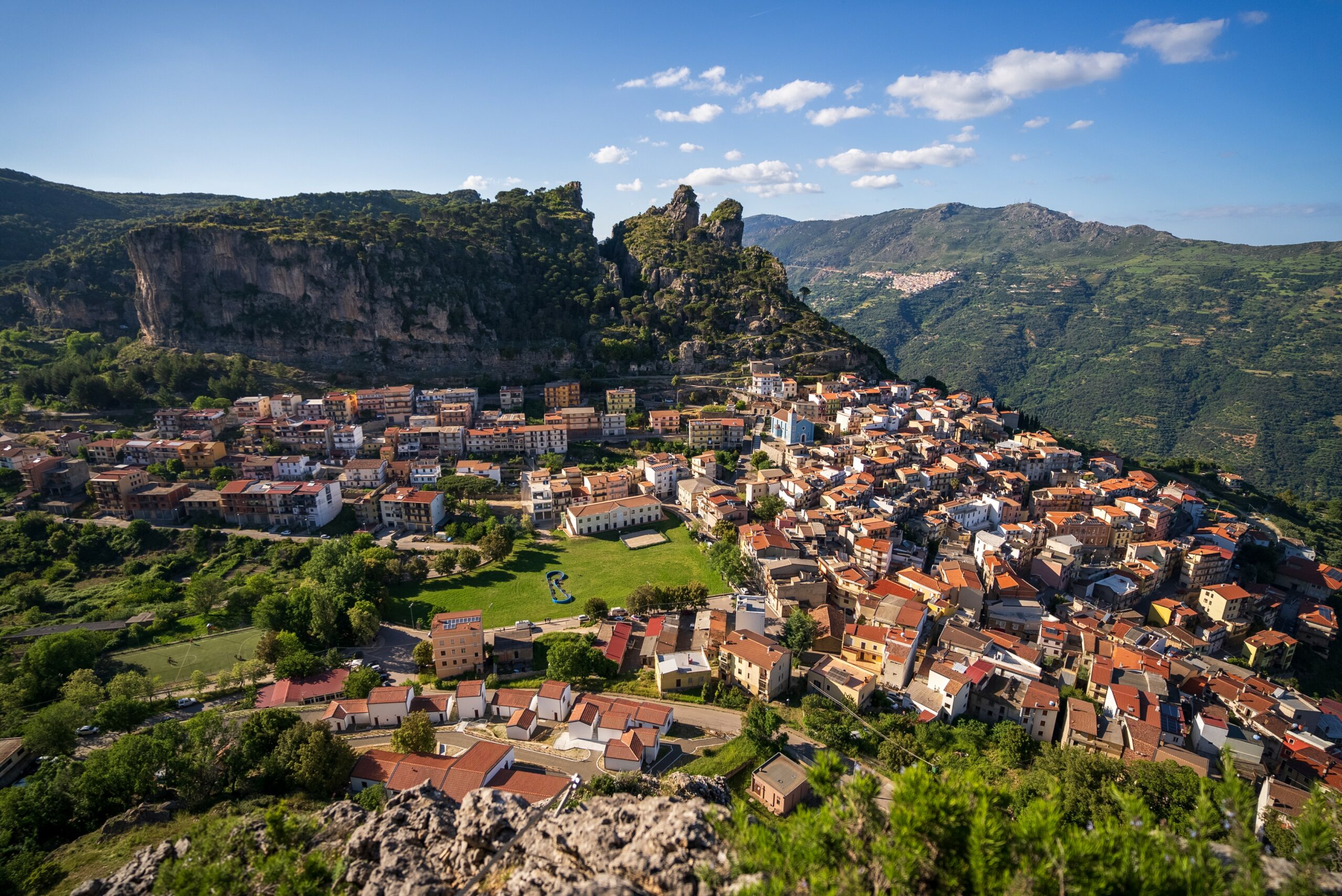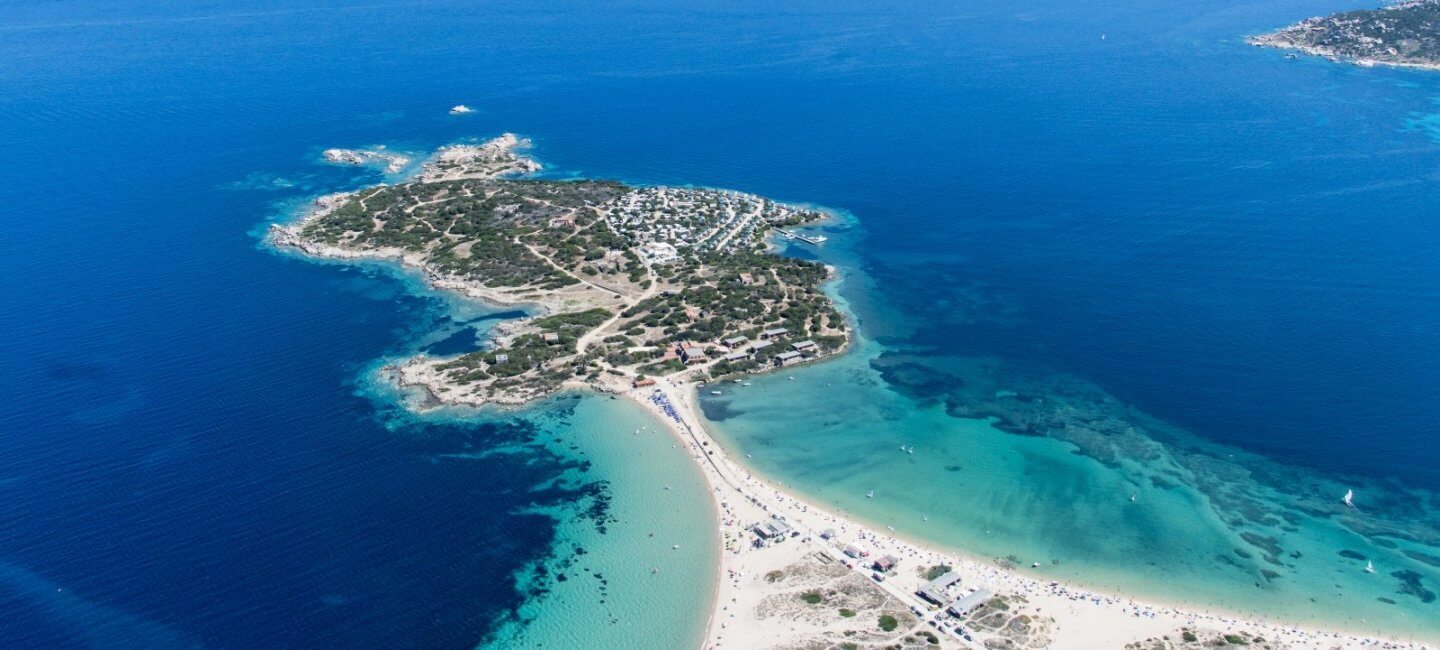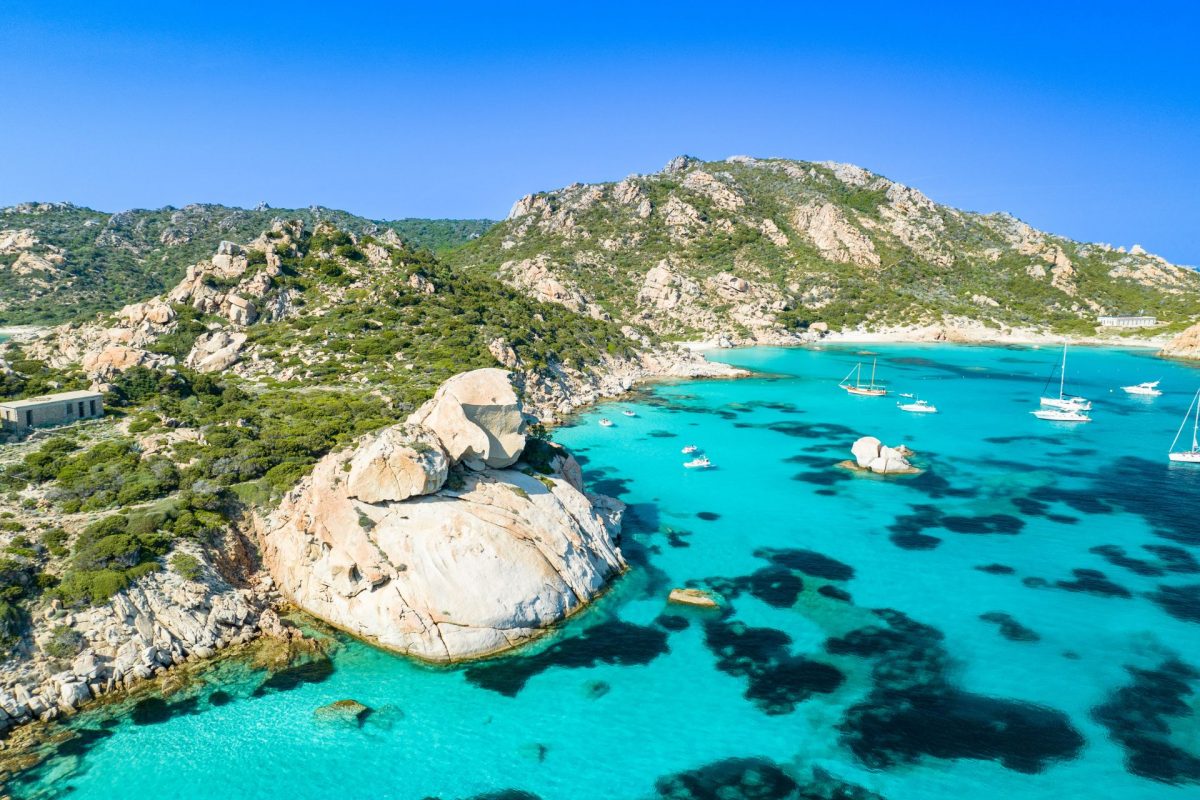Imagine a beach that looks like something out of a dream: pink sand like a pastel-painted sunset, waters so transparent they look like glass, and a silence broken only by the wind. We are in Budelli, in the Maddalena archipelago, in front of one of the rarest and most fragile natural phenomena on the planet. But what makes this beach so special? And why, despite the fact that it is forbidden even to walk on it, has it triggered thefts, pirate legends and even a curse? Curiosity and legend about the pink beach
1. The secret of colour: the scientific (and poetic) magic of pink sand
Budelli's Pink Beach does not owe its colour to a trick of the light or an Instagram filter: it is a real biological-mineralogical miraclethe result of a delicate natural balance.
The invisible protagonists: red forams
The pink hue is mainly created by the crushed shells of Miniolus tuberculatusa microscopic foraminifera (marine protozoa) living in the posidonia meadows around the island
These organisms have a calcareous shell purplethanks to a pigment called homotrema (similar to corals), which protects them from UV radiation. When they die, the waves crumble them and mix them with white sand (composed of granite grains and coral).
The perfect (and rare) recipe
To achieve the 'candy pink' effect, the following come into play 3 ingredients:
The exact proportionOnly 5-10% of the sand is composed of Miniolus fragments. If there were more, the beach would be red; if less, it would appear white
The grain sizeThe grains must be very fine (0.1-1 mm) to reflect light evenly.
The natural 'glue: The sea currents around Budelli create a vortex that holds the shells in the bay, while the posidonia acts as a sieve, filtering out the coarser debris.
Why does the pink beach only exist in Sardinia?
A unique ecosystem: Miniolus thrives here thanks to a combination of nutrient-poor waters (which promote transparency) and the stable temperature of the sea.
Scientists' alarm
Today, climate change threatens to upset this balance:
L'temperature increase of the sea could make Miniolus migrate northwards.
Le increasingly violent storms are eroding the beach, taking away the surface layer of pink sand.
Curiosity: In 2019, a team from the University of Cagliari created a 3D map of the bay, discovering that the seabed immediately in front is a 'mine' of intact Miniolus shells: a nature reserve ready to regenerate the beach.
2. The theft that changed everything: the beach turned into an open-air museum
In the 1990s, a tourist of unclear nationality filled a bottle with pink sand as a souvenir. Discovered, the fine was hefty, but the gesture triggered alarm: every year, unwitting visitors removed kilos of sand, risking the disappearance of the beach's unique colour.
The turning point: In 1994, Budelli was included in the Maddalena Archipelago National Park and today is forbidden even to walk on it (it can only be admired from the boat or the paths). The sand is considered a 'intangible environmental asset'Even divers must keep a safe distance!
Curious detail: There is asole exception to the ban: director Claudio Bondì in 2010 obtained permission to trample on it to shoot the film 'The Last Paradise', sparking controversy.
3. Antonioni and the mockery of black and white: when cinema betrays nature
Michelangelo Antonioni, master of cinema, chose the Pink Beach in 1964 as the location for 'Red Desert'his first film in colour. The irony? The sequences shot here were in black and white for narrative needs!
Backstage: The film was meant to depict industrial decay, and Antonioni used grey filters for the beach, turning it into a ghostly expanse. Only years later, with the spread of colour photos, did the public discover the true appearance of the place.
Other films: The beach also appears in 'Excellent corpses' (1976) by Francesco Rosi and in 'Snorkelling' (2021), but no one has ever fully exploited its surreal colour as, for instance, Wes Anderson could have done.
4. 'The Legend of the Pirates and the Curse of the Pink Sand'.
It is said that in the 17th century, Barbary pirates (such as the famous Dragut) used the beach as a hiding place for loot. Why here?
Superstition: They believed that the pink sand, dyed with the blood of sea creatures, had a magical power: those who stole it would be cursed with shipwrecks and misfortunes.
A treasure never found: Some gold diggers claim that under the sand lies a chest with Ottoman coins, buried after a battle between pirates and Genoese sailors. But the search is forbidden... and perhaps it is for the best!
5. "The desert island deception: why the wrong map saved Budelli".
- In the 1700s, some British nautical maps incorrectly marked Budelli as 'rocky island without landings'by not mentioning the beach. This mistake (perhaps intended by Sardinian sailors?) kept pirates and merchants away for decades, preserving its isolation.
- Ironic detail: Even today, some old navigation manuals call it 'Red Sand Bay'but the name was never made official, perhaps so as not to attract too much attention.
6. 'The scientific hoax: when they said pink sand was toxic'
- In the 1960s, rumours circulated that the colouring was due to radioactive minerals (a fake news originated from a misunderstanding of geological studies). The panic was short-lived: a marine biologist proved that it was the shells of Miniolusbut for a time, tourists avoided the island!
- Side effect: This black legend inspired an Italian science fiction story, 'The day the beach turned purple' (1972), where the sand changed colour due to an alien virus.
7. When the beach became a (illegal) work of art
In 1985, the land art artist Pierrico22 (pseudonym of an anonymous activist) created a gigantic inscription in the sand with seaweed: 'NOT FOR SALE'in protest against the first attempts to privatise the island.The writing, visible only from above, was erased in two days, but the gesture inspired the campaign to make Budelli public assets.
8. The mystery of the disappearance of pink (and the miraculous return)'.
Between 2008 and 2012, many noticed that the beach was losing its colourturning whitish. There was talk of pollution, climate change or too many boat passages. The truth? An'alteration of currents had reduced the intake of shells of Miniolus. After a few storms in 2013, the pink sand is back, more vivid than ever. Scientists are still studying the phenomenon!
9. "The pink beach that isn't there: imitations around the world (and why they fail)".
There are at least 3 beaches self-proclaimed 'pink' (Portugal, Indonesia and the Bahamas), but none have the same colour: they are reddish or owe their tone to temporary algae.
Why is Budelli unique? Here pink is permanent and changes hue with the light: at dawn it is almost fuchsia, at midday it looks golden, and at dusk it becomes lavender.
10. "The Last Guardian: Budelli's Solitaire and his Secret Diary".
Until 2016, the island had only one inhabitant: Mauro Morandiformer teacher who lived as a hermit in the former caretaker's house for 30 yearsdefending the beach from unruly tourists. iThe rediscovered diary: After his eviction (forced for legal reasons), it was discovered that he kept a notebook with poetic observations on the beach: "Today the wind painted even the clouds pink"..
Conclusion: the pink beach, a treasure to discover and protect
Budelli's Pink Beach is not just a picture postcard location, but a true mood of nature, where science, legend and Instagramability come together. Between fashion microbes, cursed pirates and super strict bans, this corner of Sardinia reminds us that the most beautiful things are often the most fragile.
✋ Before saying goodbye:
- Have you ever seen a pink beach in person? Tell us about your experience in the comments!
- Share this article with that friend of yours who dreams of stealing some sand (spoiler: don't do it, the curse is real 😉)
- Follow the blog for more curiosities about secret beaches and out-of-the-ordinary places!
P.S. If you want to find out where the pink beach is, we have a complete guide to the pink beach → If you can't wait to visit it click here for booking a tour on a boat.

